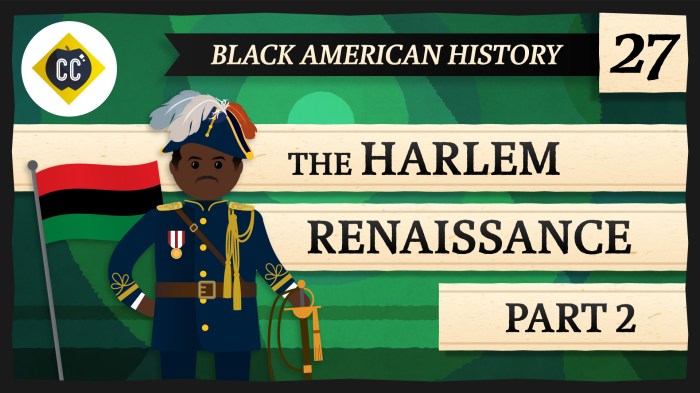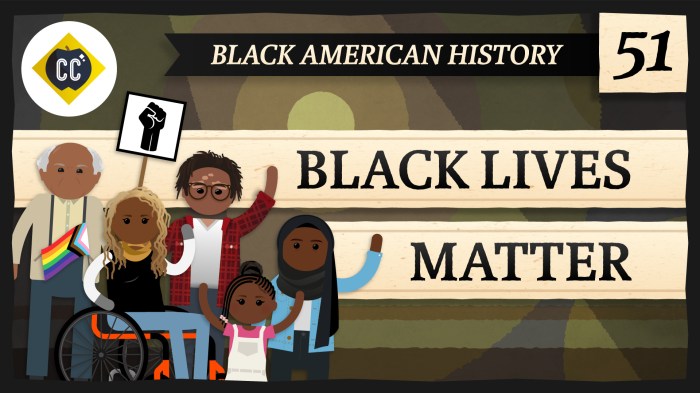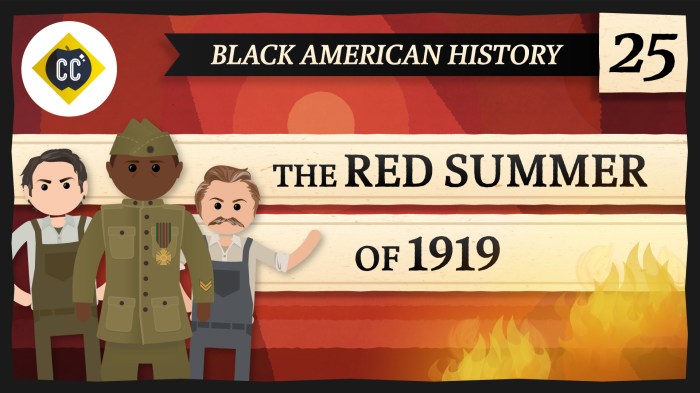Reconstruction crash course black american history #19 worksheet – Delving into the Reconstruction Crash Course: Black American History #19 Worksheet, we embark on a journey to explore the transformative Reconstruction era, its challenges and triumphs, and the devastating crash that ensued. This worksheet serves as a comprehensive guide to understanding this pivotal period in American history.
The Reconstruction era witnessed both progress and setbacks for African Americans, with the passage of landmark legislation like the 13th, 14th, and 15th Amendments, and the emergence of influential figures like Frederick Douglass and Blanche Bruce. However, the era was also marked by resistance and violence from white supremacists, culminating in the Compromise of 1877, which effectively ended Reconstruction and ushered in the Jim Crow era.
Reconstruction Era in Black American History

The Reconstruction era (1865-1877) was a transformative period in American history that followed the Civil War. It marked a time of significant change and upheaval, particularly for African Americans who had recently gained their freedom from slavery.
During Reconstruction, the federal government implemented various policies and initiatives aimed at protecting the rights of African Americans and integrating them into American society. These included the passage of the 13th, 14th, and 15th Amendments to the Constitution, which abolished slavery, granted citizenship to African Americans, and extended voting rights to all male citizens regardless of race.
Challenges and Successes Faced by African Americans
- Challenges:African Americans faced numerous challenges during Reconstruction, including widespread discrimination, violence, and economic inequality. White supremacist groups such as the Ku Klux Klan emerged, terrorizing African American communities and undermining their efforts to gain political and economic power.
- Successes:Despite these challenges, African Americans made significant progress during Reconstruction. They established schools and churches, participated in politics, and gained economic independence. Many African Americans also served in public office, including Hiram Revels, the first African American elected to the U.S.
Senate.
Key Figures and Events
- Frederick Douglass:A prominent abolitionist and civil rights activist, Douglass advocated for the full equality of African Americans.
- Reconstruction Acts:A series of laws passed by Congress to protect the rights of African Americans and establish military rule in the former Confederate states.
- Compromise of 1877:A political agreement that ended Reconstruction and led to the withdrawal of federal troops from the South, effectively ending the federal government’s efforts to protect African American rights.
Causes of the Reconstruction Crash

The Reconstruction era came to an end in 1877, a period known as the Reconstruction crash. This collapse was caused by a complex interplay of economic, political, and social factors.
Economic Factors
- Economic depression:The Panic of 1873 led to a severe economic downturn, which made it difficult for the federal government to fund Reconstruction efforts.
- Southern resistance:White Southerners resisted the federal government’s attempts to implement Reconstruction policies, which further strained the economy.
Political Factors, Reconstruction crash course black american history #19 worksheet
- Political corruption:Corruption and mismanagement within the Republican Party, which controlled the federal government during Reconstruction, weakened support for the party and its policies.
- Northern apathy:As time went on, many Northerners grew tired of the ongoing conflict in the South and became less willing to support Reconstruction.
Social Factors
- White supremacy:White supremacy remained deeply ingrained in American society, and many white Southerners were unwilling to accept the idea of African American equality.
- Violence and intimidation:White supremacist groups, such as the Ku Klux Klan, used violence and intimidation to suppress African American political and economic progress.
Consequences of the Reconstruction Crash
The Reconstruction crash had profound and long-lasting consequences for African Americans.
Jim Crow Era
The failure of Reconstruction led to the Jim Crow era, a period of legalized racial segregation and discrimination that lasted until the mid-20th century.
Perpetuation of Racial Inequality
The Jim Crow era perpetuated racial inequality in all aspects of American life, from education to employment to housing.
Ongoing Legacy
The legacy of Reconstruction continues to shape contemporary issues related to race and inequality in the United States.
Black American History and the Reconstruction Crash

| Date | Event | Significance | Impact |
|---|---|---|---|
| 1863 | Emancipation Proclamation | Freed slaves in Confederate-held territory | Marked the beginning of the end of slavery |
| 1865 | Thirteenth Amendment | Abolished slavery | Granted freedom to all enslaved African Americans |
| 1868 | Fourteenth Amendment | Granted citizenship to African Americans | Extended civil rights to all citizens |
| 1870 | Fifteenth Amendment | Extended voting rights to all male citizens regardless of race | Allowed African Americans to participate in the political process |
| 1877 | Reconstruction Crash | Ended Reconstruction and led to the Jim Crow era | Set back the progress made by African Americans during Reconstruction |
| 1954 | Brown v. Board of Education | Declared school segregation unconstitutional | Marked the beginning of the civil rights movement |
| 1964 | Civil Rights Act | Prohibited discrimination based on race, color, religion, sex, or national origin | Ended legal segregation and discrimination in public places |
Reconstruction Crash: A Case Study: Reconstruction Crash Course Black American History #19 Worksheet

Example: The Case of Mississippi
- Methods:Examination of historical documents, census data, and oral histories.
- Procedures:Analysis of the economic, political, and social factors that contributed to the collapse of Reconstruction in Mississippi.
- Findings:White supremacy and violence were major factors in undermining Reconstruction efforts. The economic depression and political corruption also played significant roles.
- Implications:The case study of Mississippi provides a microcosm of the broader causes and consequences of the Reconstruction crash.
Expert Answers
What was the significance of the Reconstruction era?
The Reconstruction era marked a period of significant social, political, and economic changes for African Americans in the aftermath of the Civil War, including the passage of landmark legislation like the 13th, 14th, and 15th Amendments.
What were the key challenges faced by African Americans during Reconstruction?
African Americans during Reconstruction faced resistance and violence from white supremacists, who sought to maintain the status quo of racial inequality. This resistance included the rise of organizations like the Ku Klux Klan and the passage of Black Codes that restricted the rights of African Americans.
What were the long-term consequences of the Reconstruction crash?
The failure of Reconstruction led to the Jim Crow era, a period of legalized racial segregation and discrimination that lasted for decades. This era perpetuated racial inequality and hindered the progress of African Americans in all aspects of society.